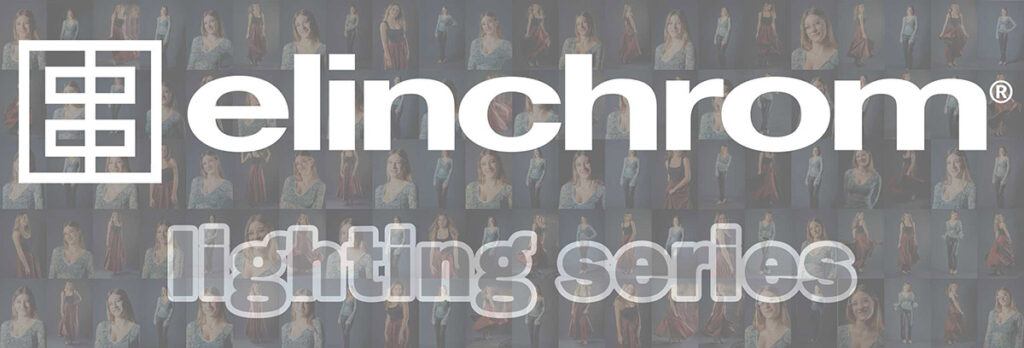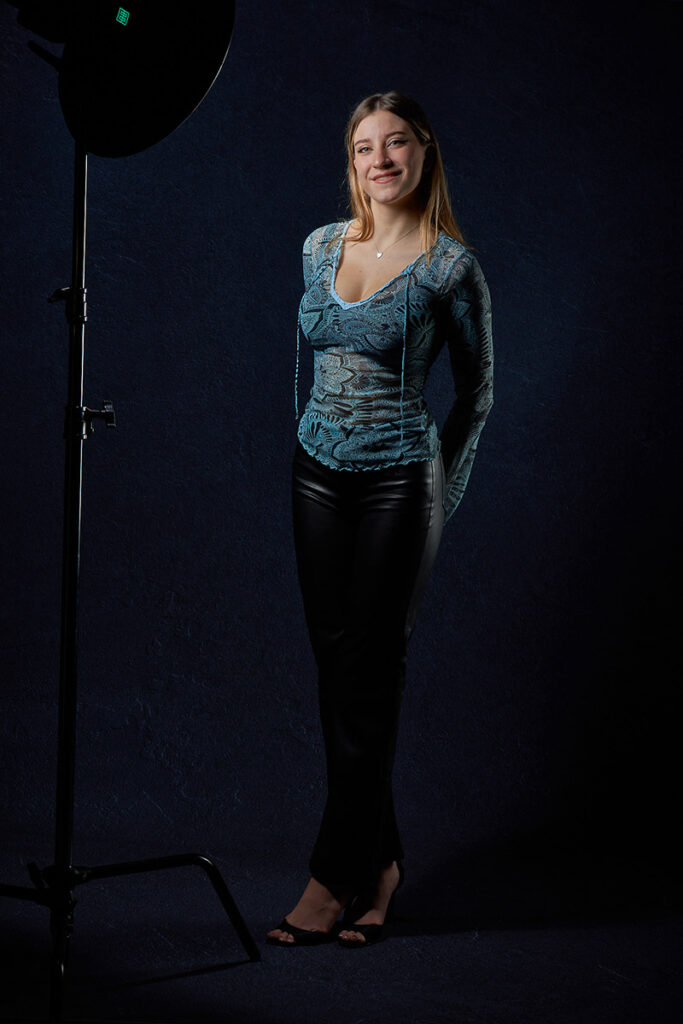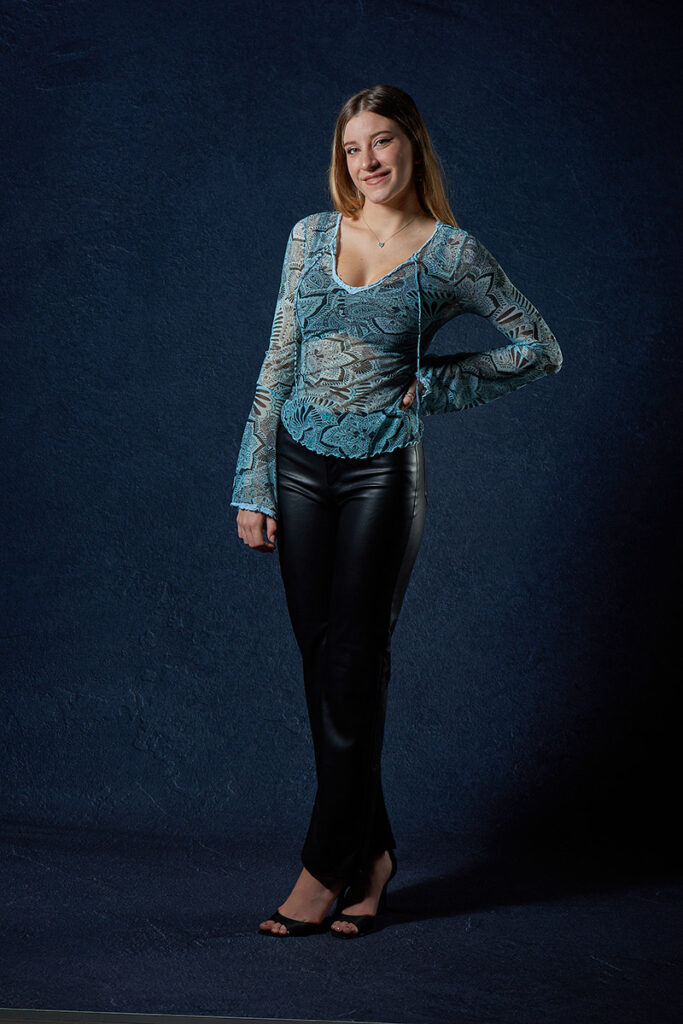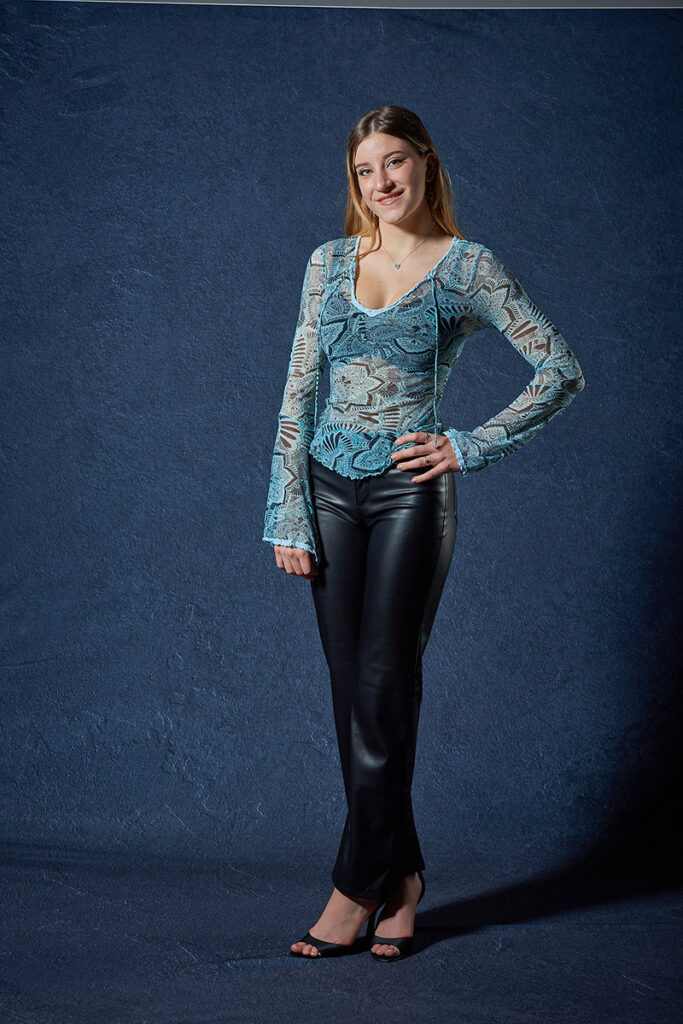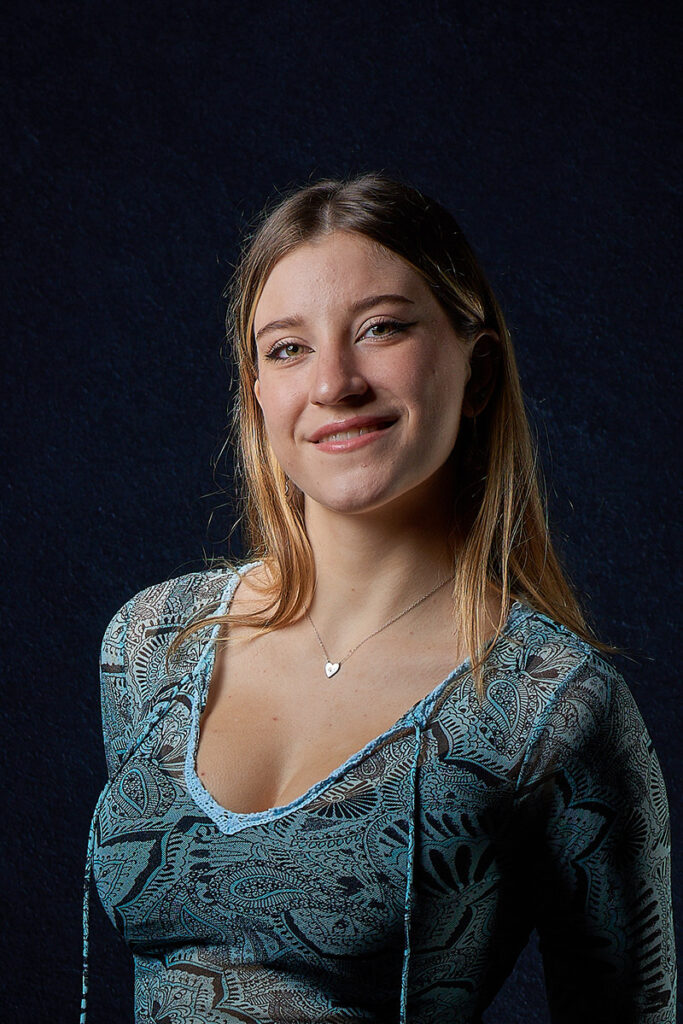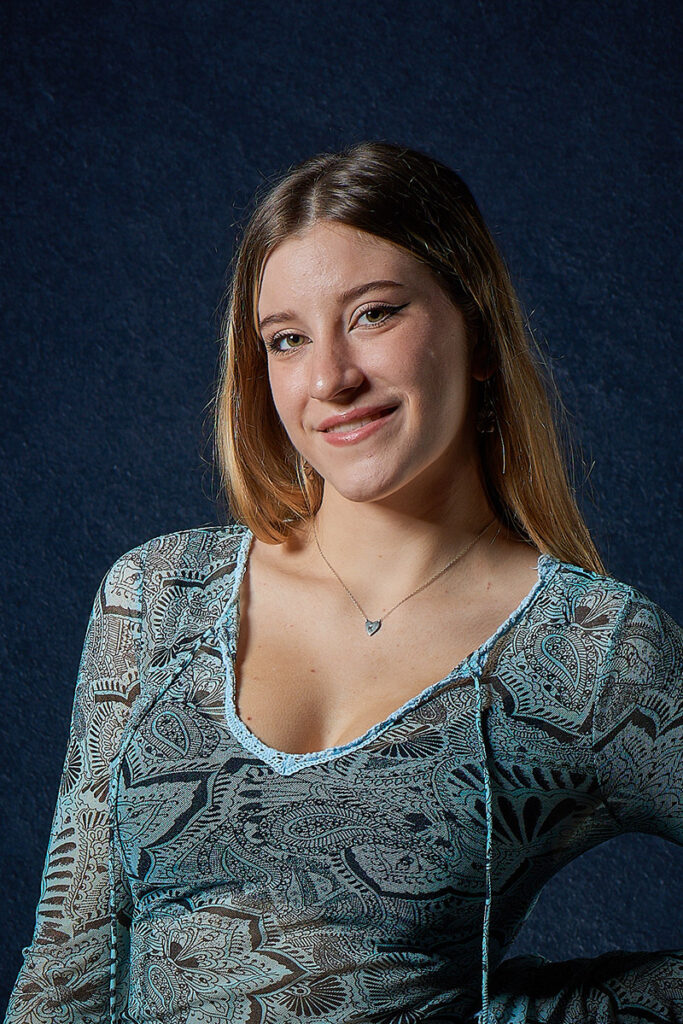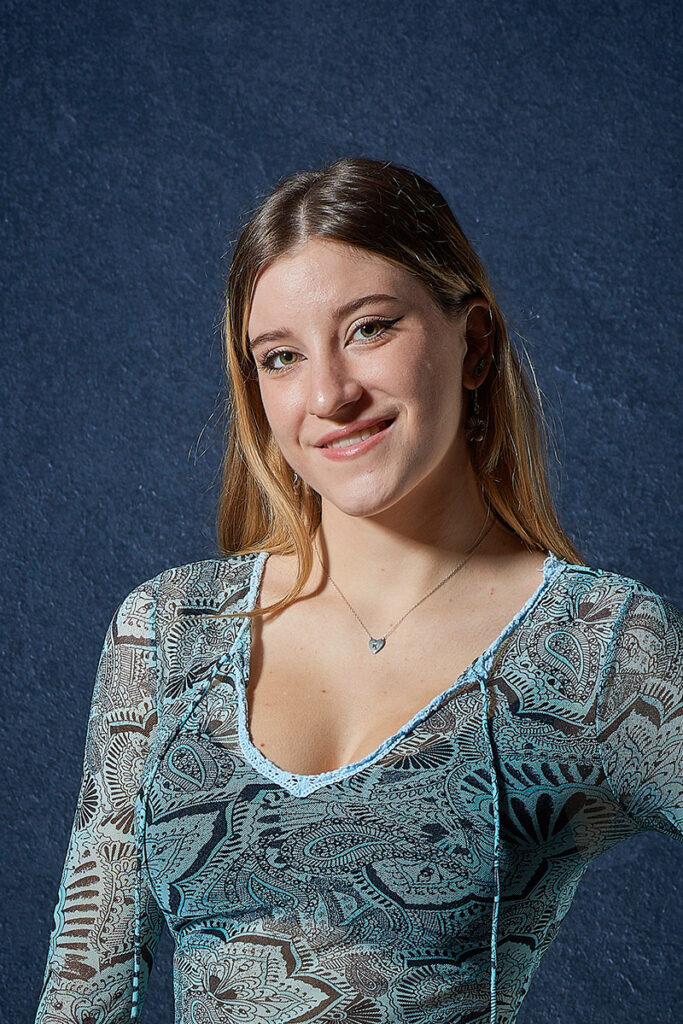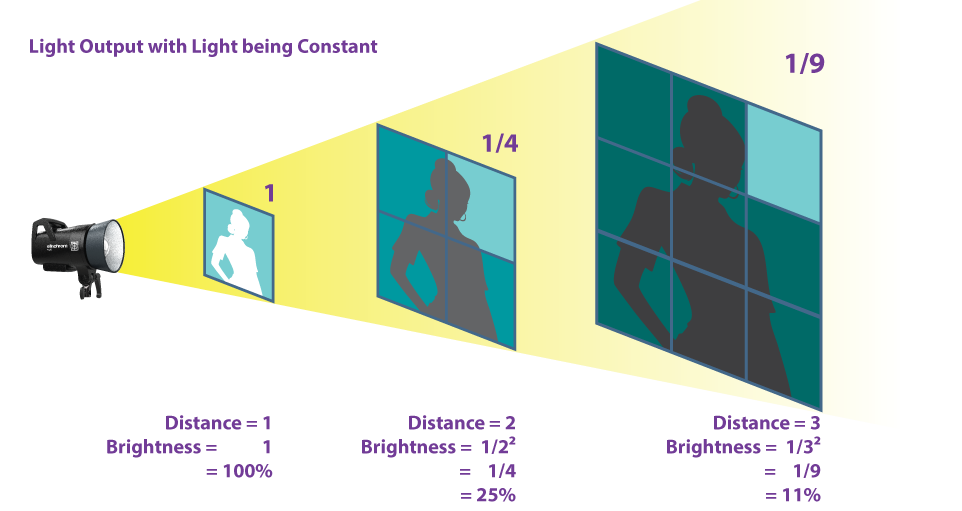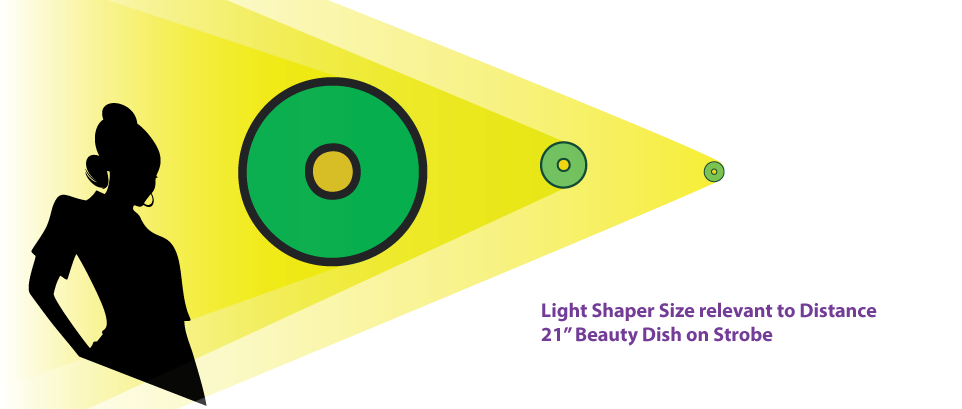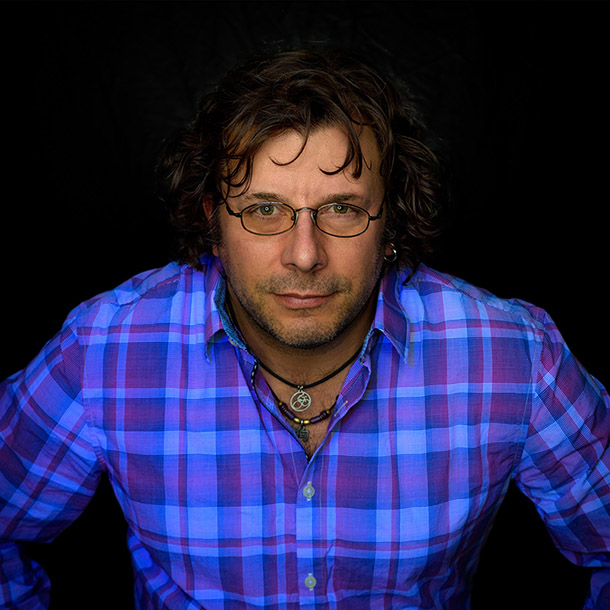Welcome to the seventh installment of our new monthly that highlights a different Elinchrom Light Shaper or Lighting Technique, with sample images (full length and cropped headshots) and lighting diagrams. All the images were photographed with the same model and outfit (standing in the same spot on the background – about 3 feet away), the same day in the same blacked out studio, with the same strobes at the same height (forehead height) & distance (about 5 feet) from the model and the same camera setup. I tried to remove as many obstacles as possible so we can compare light shaper effects.
I used an Elinchrom FIVE battery monolight triggered by the Elinchrom Transmitter Pro. My trusty Gossen Digisky light meter ensured consistent exposure values – it has an integrated Skyport transceiver to remotely trigger the FIVE. My Nikon D810 had a Tamron 85mm f/1.8 lens and all was mounted on a Vanguard VEO 3+ 263CB tripod. Camera settings are ISO64, f/8, 1/125s We used an Easiframe backdrop system with the Grey Texture backdrop. I tethered my camera into Capture One on my laptop with a Tether Pro USB-C to C cable and connected my laptop to a large screen TV with a TetherPro HDMI cable so we could review images on the big screen.
Special thanks to Phil and RevPrint Studio (https://www.revprint.com) for the use of their space. Phil hosts workshops featuring Elinchrom gear via West Toronto Photography Group (https://www.wtpg.ngo/)
This month, I’ll demonstrate how distance between your light shaper and subject affects your images. I’ve often seen photographers set the position of their incorrectly for the type of image they want to create. For these images, I used one FIVE with the Silver Beauty Dish. As I moved the light further away, I also raised it so the light angle was consistent.
There is one constant rule of light that never changes, no matter which light shaper or light you use: the Inverse Square Law of Light. This means that the intensity of your light is inversely proportional to the square of the distance. In simple terms, if you move your light closer to your subject, you will overexpose the image and if you move your further from your subject, you will underexpose it. If you double the distance, you get ¼ the light; if you triple the distance, you get 1/9 the light. Doubling your distance requires adding two stops of power to your strobe whilst tripling the distance requires about 4 1/3 stops more power. Inversely, if you move your light closer, you are cutting power.
Thankfully, strobe lights have a power range so you can adjust your light output appropriately to ensure consistent exposures no matter the distance from light shaper to subject. This is where having more powerful strobes, such as FIVE, comes in handy.
The reason I talk about this first is that often I won’t re-meter my light. If I’m bringing my light closer, I lower the power appropriately and vice versa if I move the light away. This comes in handy if you want to make slight adjustments to power output without changing the actual power output from the light – just slide it towards or away. But you have to understand how your image will be affected by these movements.
This will be easiest if we look at all three distances at once. To keep things simple, I measured out 2.5 feet from Maya’s face, then doubled that to 5 feet and doubled again to 10 feet.
The first thing we notice is the fall-off onto the background – there’s very little light hitting the background with the FIVE so close to Maya but at 10 feet away, there’s fairly even illumination around the frame. This is to be expected as the beam of light is narrower near the FIVE and spreads predictably as the FIVE is moved further away from Maya.
Unfortunately, you can see my light and stand in the full-length image at 2.5 feet – I would have to remove this in post by cropping or healing.
It’s in the cropped headshots where we can really see how light distance affects our images. With the light closer, the shadow transitions are noticeably softer whilst they get much crispier at distance. As you move your light closer, not only is it softer but contrast is lower. The highlight on Maya’s nose is also softer. The illumination on the background is more apparent, as are the flyaway hairs.
Another benefit of having your light closer is that your model light is closer so your subject’s pupils close more to show more of their colourful irises. Catchlights will also show more detail of your light shaper.
The reason for this is your light shaper becomes a smaller light source as you move it away, from the perspective of your subject.
The key takeaways of how distance affects your images is the following:
- Your light is softer – shadow transitions and highlights are both softer – the closer your light is;
- There’s more spill on the background as you move your light away from your subject;
- Your light has to move up as you move it back to maintain your light angle;
- Eyes will look nicer with more iris showing when your light is closer.
How do I determine how close I want my light? If it’s a headshot, I’ll opt for having my key light closer to soften the shadows and have the eyes pop more. This is especially helpful when you need to reduce the appearance of blemishes and shadows – a touch of fill light finishes this look. I’ll add a background light if I want to illuminate the background and also add rim and hair lights. I’ll show examples of these in future issues. If I’m photographing full length images, I’ll move my light back and out of the way. If I’m photographing low-ley images where I don’t want spill onto my background, I move my lights in. For high key images on white, I’ll move my light back.
Share some of your favourite images where light distance affected your decision of where to place it on our Facebook page or tag us on Instagram #photonewscanada #elinchromlightshaper.
Next month, I’ll show how to manipulate your light and subject to remove glare from eye glasses. At the end of the series, we’ll compare each of the Elinchrom light shapers to each other. See you next month!
Read the previous articles:
Elinchrom Light Shapers and Lighting Techniques – #Episode 1
Elinchrom Light Shapers and Lighting Techniques – #Episode 2
Elinchrom Light Shapers and Lighting Techniques – #Episode 3
Elinchrom Light Shapers and Lighting Techniques – #Episode 4
Elinchrom Light Shapers and Lighting Techniques – #Episode 5
Elinchrom Light Shapers and Lighting Techniques – #Episode 6
Elinchrom Light Shapers and Lighting Techniques – #Episode 7
Items Discussed
Author: Will Prentice
A portrait, fine art and commercial photographer for 30 plus years, Will Prentice is not just a contributor to PHOTONews magazine, but also host of PHOTONewsTV, owner of Captura Photography+Imaging and Technical Support/Brand Manager for Amplis Foto, Canada’s largest distributor of photographic equipment.
Will teaches photographers of all skill levels how to improve their craft – from creative photo projects to picking the right gear for their needs to flattering lighting to getting the best expressions to creating final images for screen and print. His unique style of highly detailed images with perfect tonality, wide dynamic range and stunning colour is instantly recognizable. Commercial clients rely on Will’s creative eye and mastery of lighting.
When he’s not behind the camera or in front of a class, you’ll find Will outdoors in any weather – usually on one of his bikes or enjoying time with his grandchildren.



